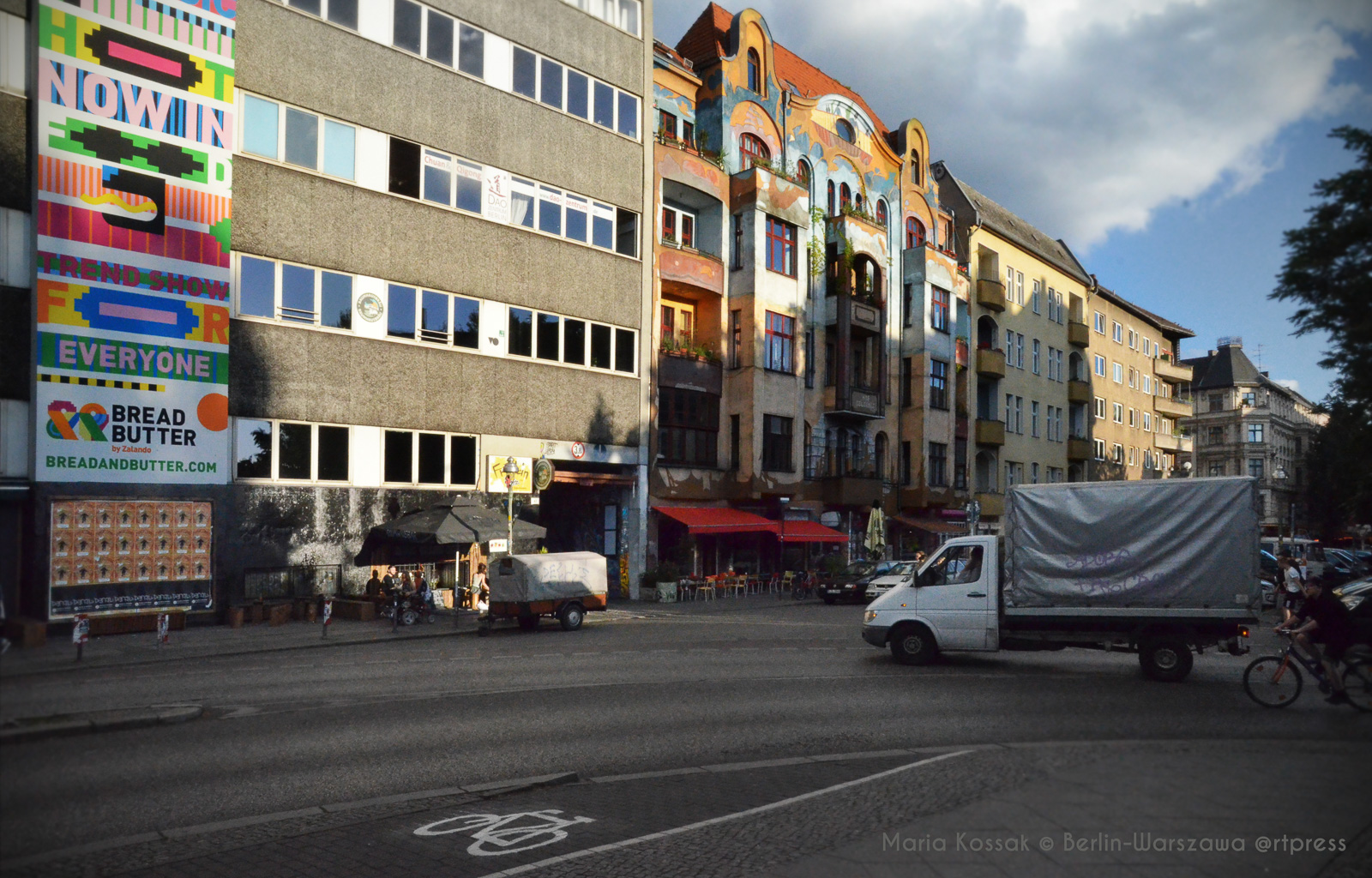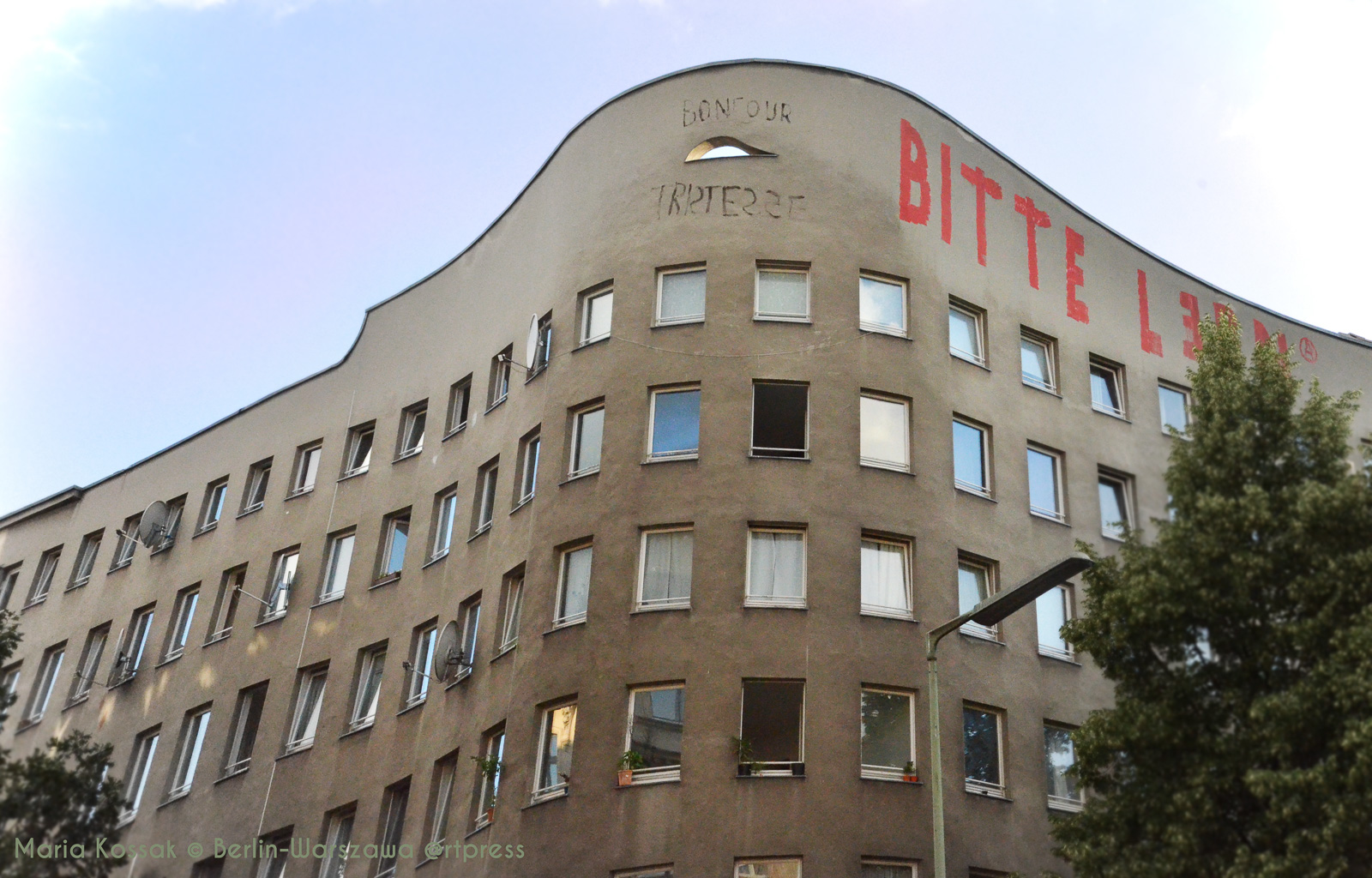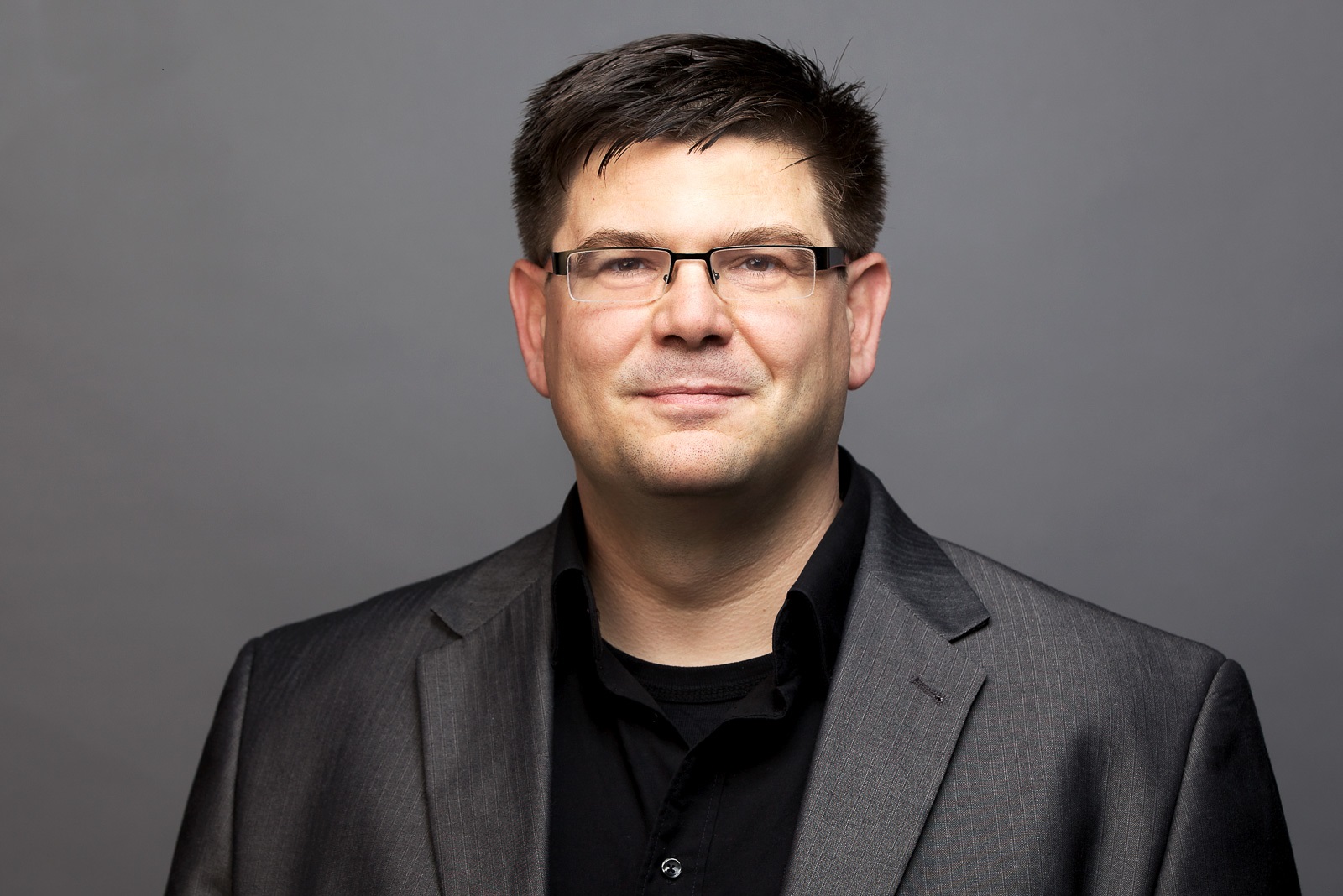DG: Is Berlin heading towards becoming another Paris – its outskirts slowly turning into ghettos which are going to explode in a couple of years? Many people are probably not aware of the fact that immigrants arriving in Berlin in the 1960s and 1970s were ordered to settle in the selected districts, i.a. Kreuzberg, Neukölln, Wedding. That is where they established their communities and infrastructure. Today they are driven away from these districts by wealthier residents, investors, entrepreneurs.
AH: We lack data pertaining to migration of people moving around within the city, but since immigrant communities reside in the central districts you have just mentioned, we may safely assume that quite a lot of those who had to retreat into the outskirts within the past several years were immigrants.
Putting aside people’s origins for a while, we can state without fail that the percentage of impoverished households which depend on social services is gradually growing amongst residents of large estates in the outskirts. It is happening both in the estates of tower blocks made of pre-fabricated concrete in the area of former GDR and in the former social housing estates within the area which used to be West Berlin.
The example of Parisian outskirts – banlieues – suggests that excessive concentration of poverty in one place as well as a sequence of social processes such as discrimination and exclusion (also spatial) lead to crises. In Berlin it is the first time ever that we observe such concentration of indigent people in the outskirts. Moreover, it is also the first time in history that this process has been somewhat forced. In the 1980s people happily moved into newly built apartments which were at the time perceived as high-standard. Today, high-rise estates are considered notorious – that is where ghettos are being formed. The situation in Paris is far worse than Berlin, but the tendency is similar.
DG: Are local authorities in Berlin learning from Paris mistakes? What do they do to stop this process?
AH: Alas, I have to say that the authorities have already failed us. Most debates on Berlin’s urban developement ignore the situation in the outskirts. The problem which has been far more frequently addressed is poverty in the central districts such as Kreuzberg, Neukölln or Wedding. Therefore, the change of social composition is construed as a social mix and often presented as a successful outcome of the authorities’ initiatives which were aimed at raising the social status of the above mentioned districts. The mayors of Kreuzberg or Neukölln boast: „look, only a decade ago there were loads of indigent people here – now we have a better social mix in our neighbourhoods”. It is only when you care to see a wider picture you will notice that the poverty has not disappeared, it has simply moved somewhere else.
DG: The Ruttli School in the north of Neukölln may serve as an example of such an operation on the part of the authorities being focused on success in central Berlin.
AH: Yes, it is indeed a very good example. I think it all started in 2006. There was a nationwide debate at the time on the extremely poor condition of schools in districts such as Neukölln; there were articles in the press on ghettos being formed in Berlin, on cases of students bullying their teachers and fellow students from Turkish communities. That is when numerous urban and cultural intervention projects were being implemented in order to amend the situation, at least in this limited area. A lot of public money was spent on improving the school functioning, e.g. building new school educational campus. Today, the district is inhabited by more affluent people – the majority are German university-educated families.
This particular school may be far better today, but very many schools in Berlin are still facing problems as far as education level is concerned, there is a shortage of ca. 1,500 teachers. Berlin authorities are forced to encourage citizens of the Netherlands or Austria to come over here to teach.
DG: You can, however, rely on young, inexperienced teachers – according to the binding law, they have to pass their three-year training in a specific school. They can leave only having completed this compulsory period.
AH: Yes, and indeed many young teachers move away because administration in other German länder offer them much higher salaries. It has to be said, of course, that in many districts of Berlin being a teacher is a very stressful job – there are too many students in one class, numerous families support themselves solely on the dole. The Berlin education system does not increase their social mobility. Meanwhile, wealthier parents sign their children up to private schools or to schools with special teaching programs.
DG: What influence may the refugee issue exert on Berlin housing market?
AH: I trust it is still a small enough number [approximately 100,000] and that it will not have a direct impact on the structure of the population. Still, we do need 25,000 flats to solve the problem and deal with the crisis. The city has been struggling with shortage of affordable housing for several years now – we were short of 100,000-150,000 apartments. The refugee issue in Berlin sheds a new light on this problem, but it is not its immediate cause. The crisis began with a series of governmental decisions from the late 1990s which resulted in a stop in public investments in the housing construction and privatisation of very many of the existing public properties.
DG: In your blog, you often criticise social housing in Germany. Has welfare state become a myth?
AH: The state of social housing in Germany provides a perfect illustration of the transition from welfare economy to neoliberal economy. Many European countries have faced a similar problem within the past 20 years. After the war, a lot of subsidies in West Germany ended up with private investors who got involved in social housing programs. The program was based on a premise that these flats would return to the free market in some 20-30 years, and indeed they have. Such system will work on condition that each year you spend the same amount of money on it; only then you achieve a sort of reproduction of the number of social housing stock. Since already in the year 2000 Berlin was heavily in debts, the program was disendowed. In 1990, there were about 350,000 social flats in Berlin, today there are merely 120,000.
Another problem lies in the fact that prices of social housing are also rising and today they are higher than market average, which is indeed a paradox. The situation in Germany is exceptional in comparison with other European countries. In Great Britain, Sweden or Austria, social housing means that the state invests public money to create a long-term affordable housing sector. In Germany, the government creates a temporary solution within the private sector.
DG: Last year new law was introduced in Berlin; it dictates the ceiling rate of rent paid by a new tenant. Do you think it may affect the housing market which is getting more and more crowded?
AH: It will help the middle class only. According to this new law, rent specified in new rental agreement must not exceed the market average by more than 10 percent. It sounds attractive, especially if you consider how high rents can get in some districts of Berlin. However, if you take a closer look at the needs of more impoverished households, you will see that the new law does not improve their situation. People who earn below the average salary need apartments which cost less than the average rent.
DG: Is it then a pure marketing device, aimed at attracting more investors and expats to the city?
AH: I reckon it is more of a political move intended as a warm-up before the impending election campaign. Middle class has been heavily impacted by gentrification and political parties need middle class vote.
DG: Talking about gentrification – let us go back to the year 2009. You published an article then; it was titled „Karawane zieht weiter” (The Caravan Keeps on Going) and illustrated by a graph depicting the path along which gentrification – or more precisely its pioneering phase – affected all central districts of Berlin. It followed the hands of a clock – it all started in Kreuzberg, and according to your graph it ended up in Neukölln. Nowadays gentrification process has reached much further. How is it proceeding today? Are there districts which may still ward it off?
AH: There is no central district safe enough to avoid the gentrification process. The gentrification dynamics has changed over the past several years. When I was working on the graph, it was happening in rather limited areas. Towards the end of the 1980s it spread over some parts of Kreuzberg and Mitte, to proceed in the 1990s to Prenzlauer Berg and Friedrichshein, and subsequently to the remaining parts of Kreuzberg and Neukölln. It moved around the city according to the movement of clock’s hands which resulted from changes in the housing market all over the city. If anyone felt influenced by gentrification – i.e. had to pay higher rent for the flat he lived in, he would move to the nearest district where the prices were still low. Today, the cost of living and rent in some districts are so high that one cannot simply move to the „adjacent cheap area”. The circle has closed, the process has become more unpredictable. Gentrification is spreading, becaming a kind of mainstream and today it is much more difficult to assess which area will be affected next.
DG: So that was the process within Berlin’s borders. Do you think gentrification can ‘travel’? Do people moving to other cities or countries take it to a ‘new front’? Could you relate somehow gentrification in Berlin and, say, Leipzig?
AH: Not enough Berliners have moved to Leipzig to exert real impact on stirring up the process there. Many young people from West Germany, however, look for flats in Berlin. Perhaps Leipzig will be their next stop, and Warsaw the next one yet? The general pattern of mobility is as follows: young unemployed people seek cities with the right balance of cultural offer, mix of subcultures and favourable housing market. Berlin is beginning to lose in this game, and some people prefer to look for a different place to live.
However, over a period of the last several years, very many people kept arriving to Berlin from Italy, Spain but also from Eastern Europe, including Poland. They were tempted by the entertainment on offer and the multi-ethnic society. There are still plenty of reasons to settle in Berlin, only it is no longer easy to rent a flat at a reasonable price.
DG: One of Polish dailies published an article which heralded a descent of artists from Berlin to Warsaw. Many were amused by that – Warsaw housing market is not at all easy and the cost of rent, compared to salaries, is higher there than in Berlin. The art scene, too, is smaller and, on top of that, it is not entirely independent of politics.
AH: I seriously doubt such a descent will ever happen. The first wave of the so-called ‘pioneers of gentrification’ moves in a specific location driven by – first and foremost – the low cost of living. In the 1980s artists were coming to Berlin because the city was very cheap and it was easy to find an empty building to move into. Moving to a new place is always somewhat risky – you never know if you are going to succeed there, if the city you move to turns out to be a nice place to live. You also want to make sure that more pioneers will follow suit – nobody wants to be the sole artist in town.
DG: The artists would seek particular areas within central Berlin districts, the so-called Kiez, where life had a much slower pace, akin to small towns or villages. Neighbours knew one another, they used to live in one place for decades. The mobility of young people has significantly increased in the past several decades, millions of tourists visit Berlin each year, more and more expats settle here. Is Kiez at all possible today, in an age of global metropolises?
AH: The truth is not many tourists come to Berlin to see the Brandenburg Gate, Reichstag or museums. When we ask foreigners why they want to visit Berlin or settle here they point specifically to this small-town feeling, the villagy lifestyle, the special ambience of the city’s neighbourhoods. That is how they imagine life in Berlin. Clearly, it is somewhat perverse – thousands of tourists who invade any given area will not leave it unchanged. They exert an impact on the residents’ quality of life and on neighbourly relations. All of a sudden, a number of apartments in your building is being converted into tourists’ flats, shop owners respond to the arrival of tourists with a change of assortment so that it fits the newcomers’ tastes and needs. Some neighbourhoods are very disgruntled by those changes. Both residents and local politicians sense the tension between the touristy attractiveness of a given area and the quality of daily life there. People residing in these areas must find balance between being tolerant towards new arrivals from all over the globe and their personal affairs and comfort. They need to try to stabilize neighbourly relations and protect them so that they stay the same as before. Leftist activists are particulary exposed to this sort of tension as they do not want to be perceived as those who exclude tourists or expats.
DG: Activists are protesting against changes within their neighbourhoods. Berlin’s tradition of protesting stands very strong, but is protesting really effective nowadays? Can it lead to any sort of change?
AH: People used to protest mainly against tenement buildings’ owners or against the government. They used to accuse the government of bad decisions pertaining to housing policy or revitalisation, or they fought house owners and investors who introduced changes in a given district. Today the situation is far more complex – we have entered an altogether different debate. There are leaflets and stickers in the streets directed agains tourists and newcomers in the neighbourhood. It is the first time that we are dealing with an internal struggle between various groups within a society. These groups need to seek new answers cause the struggle alone is not a solution.
DG: What do you think about the new regulation which limits the rent of Berlin flats on portals such as Airbnb?
AH: The idea is that approximately 24 thousand apartments which have so far been rented to tourist are supposed to return to the regular housing market. The intentions are good but, alas, „Zweckenfremdungsverbotsverordnung” has some flaws – firstly, local authorities have no means to implement this law and to enforce it in an effective manner. Therefore, they appeal to people to report cases of illegal rent – which means, in actual fact, an appeal to denounce a neighbour and thus remain in stark contrast to the idea of local solidarity and cooperation which is so needed in a city. Secondly, the regulation does not differentiate between several different ways of managing aparments – professionals relying on profit from an all-year-round rent of holiday apartments will be affected as much as people subletting their flats for, say, six weeks per year.
DG: In Warsaw, we have inherited from the communist legislation the problem of ‘tenement house cleaners’ who evict residents from their apartments. They often operate as if they were organized crime groups – they threaten the tenants, and sometimes serious crimes do occur – such as incineration of social activist Jolanta Brzeska.
AH: I am familiar with this case. Transformation in Germany was far more regulated than in other countries from the Eastern Bloc, so it is much easier for Berlin tenants. All the laws, legal acts or regulations pertaining to housing, which are still binding, have been copied directly from West Germany. It was a ‘copy and paste’ sort of modus operandi. But also in Berlin it is much more profitable to sell an empty tenement building and so many speculating investors first try to apply legal methods to get rid of tenants, e.g. they announce a long-term modernisation of the building or say they need a specific flat for their own use. They might try to dissolve rental aggrement. Therefore, in most cases, there are no drastic solutions such as the one you have cited, although there were stories of tenement houses being set on fire, having leaky roofs or electricity cut off. None of those cases has ever been connected to the owner of a building in question.


